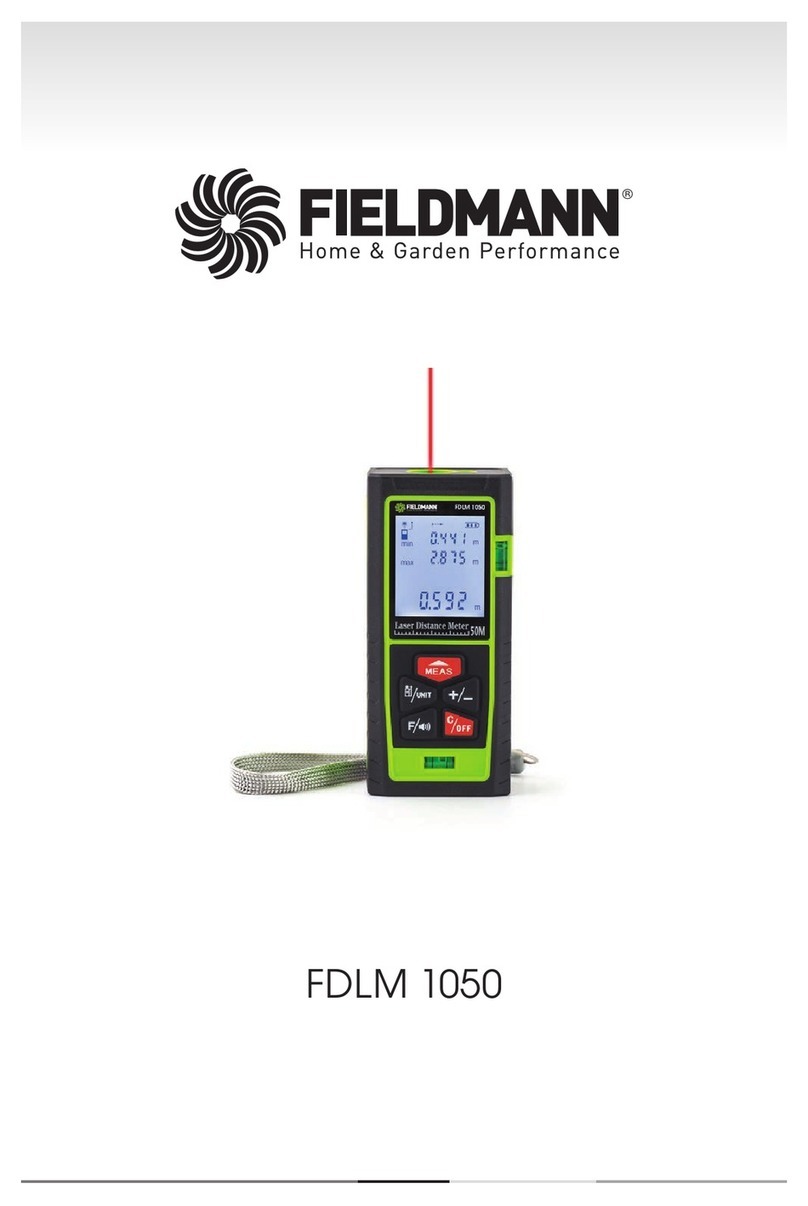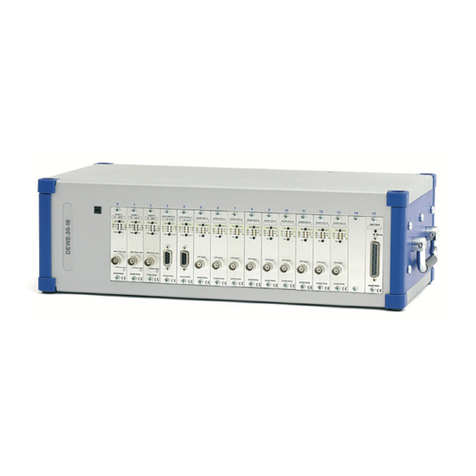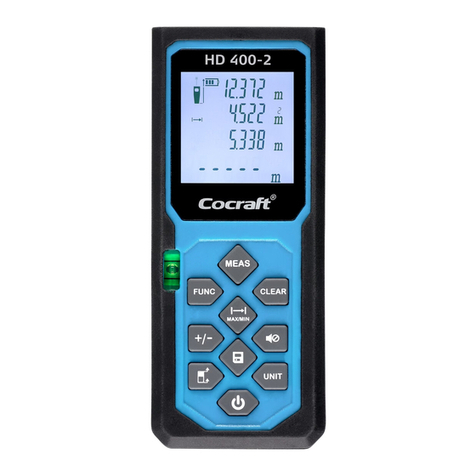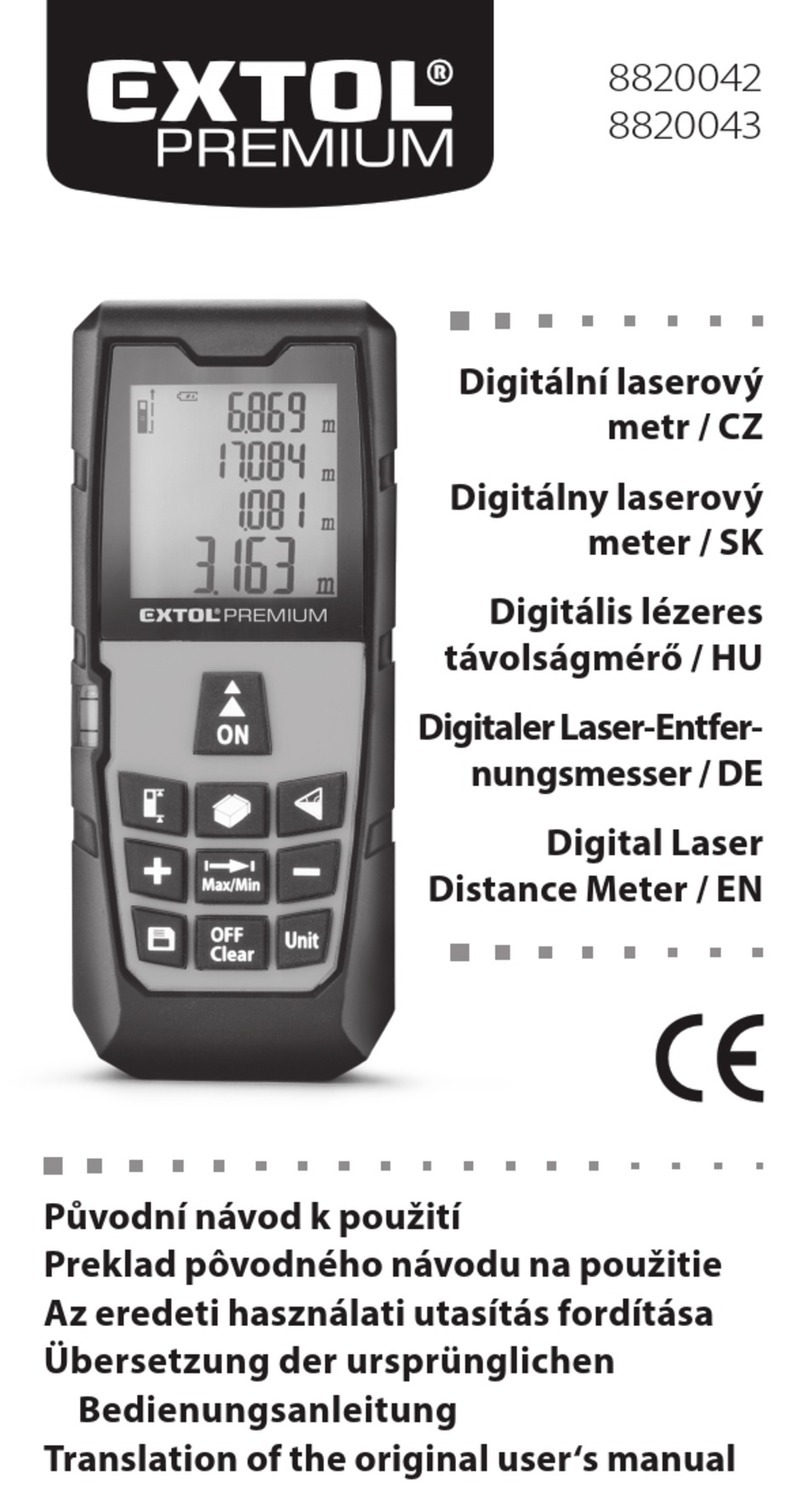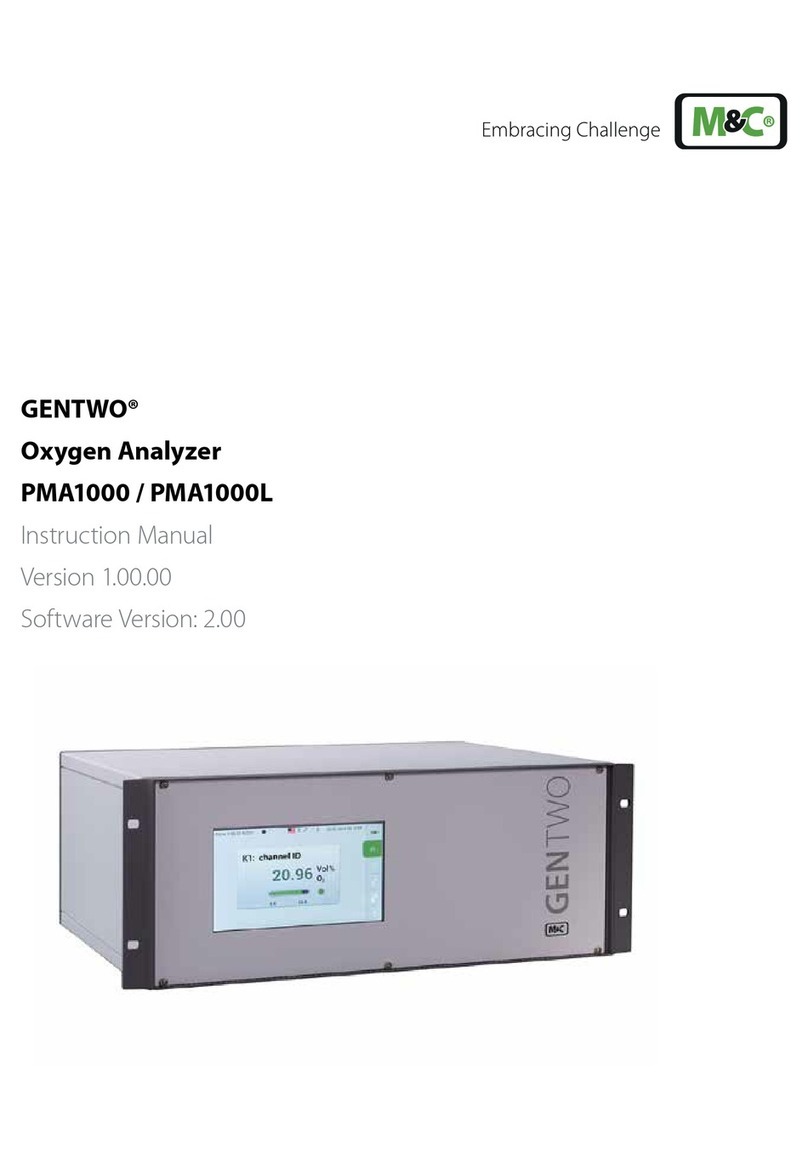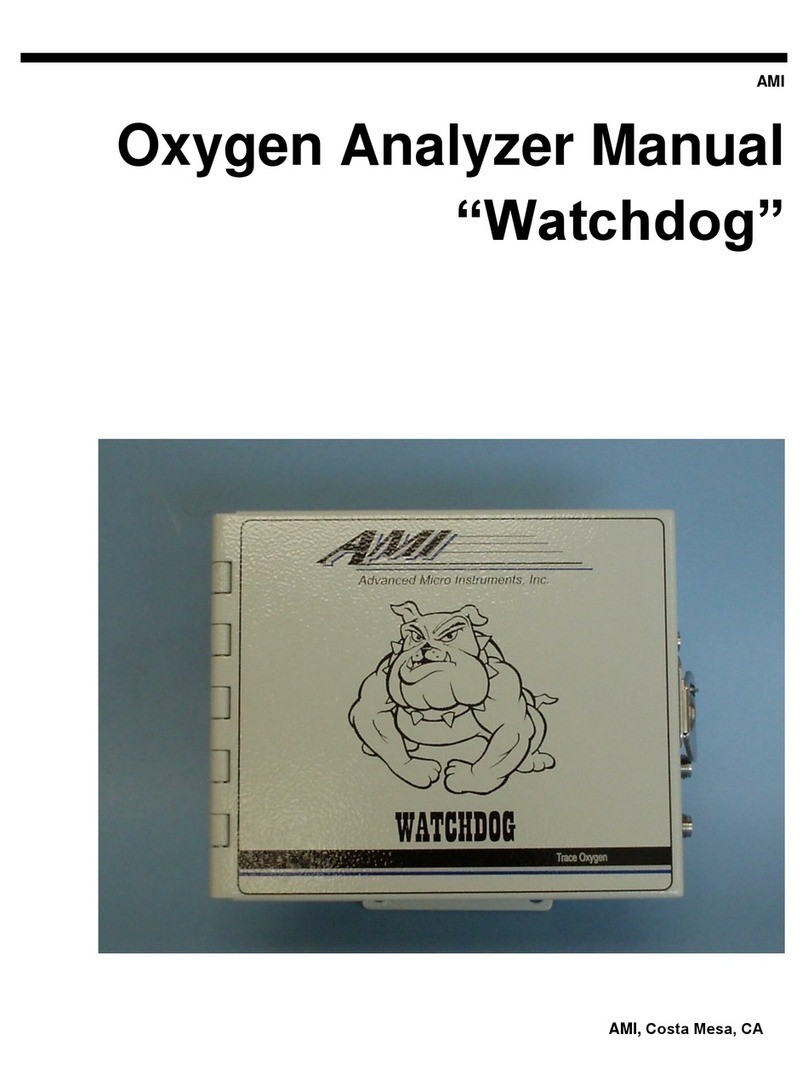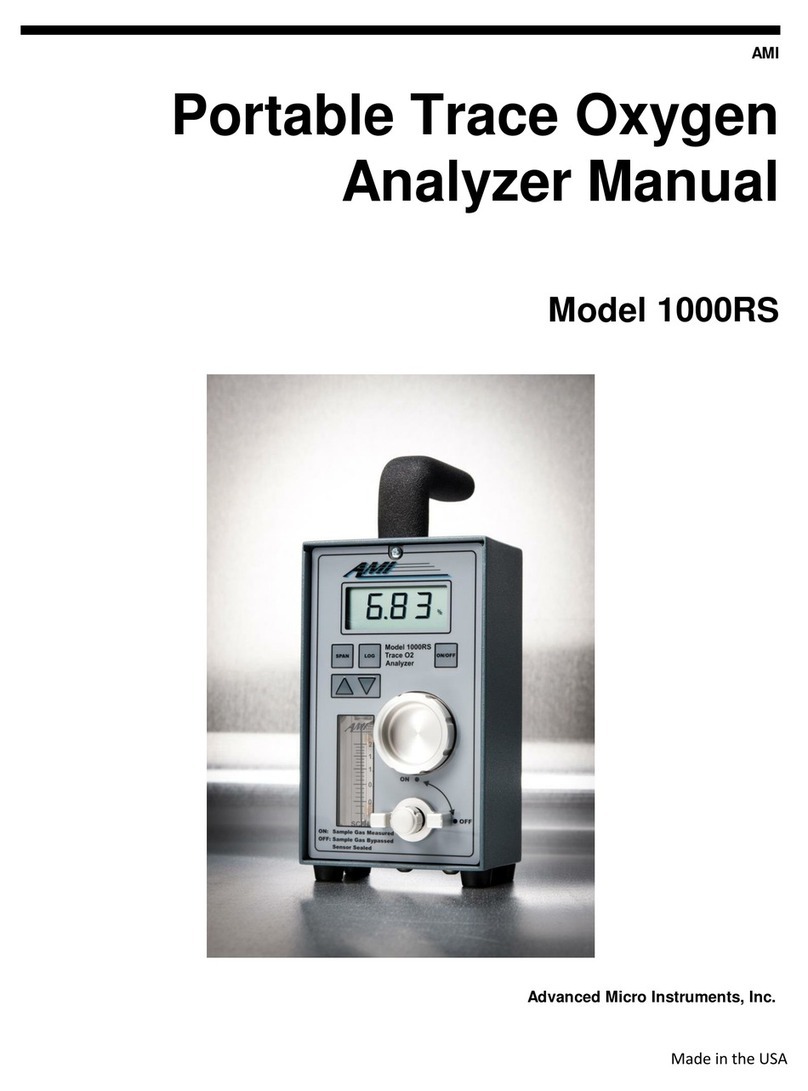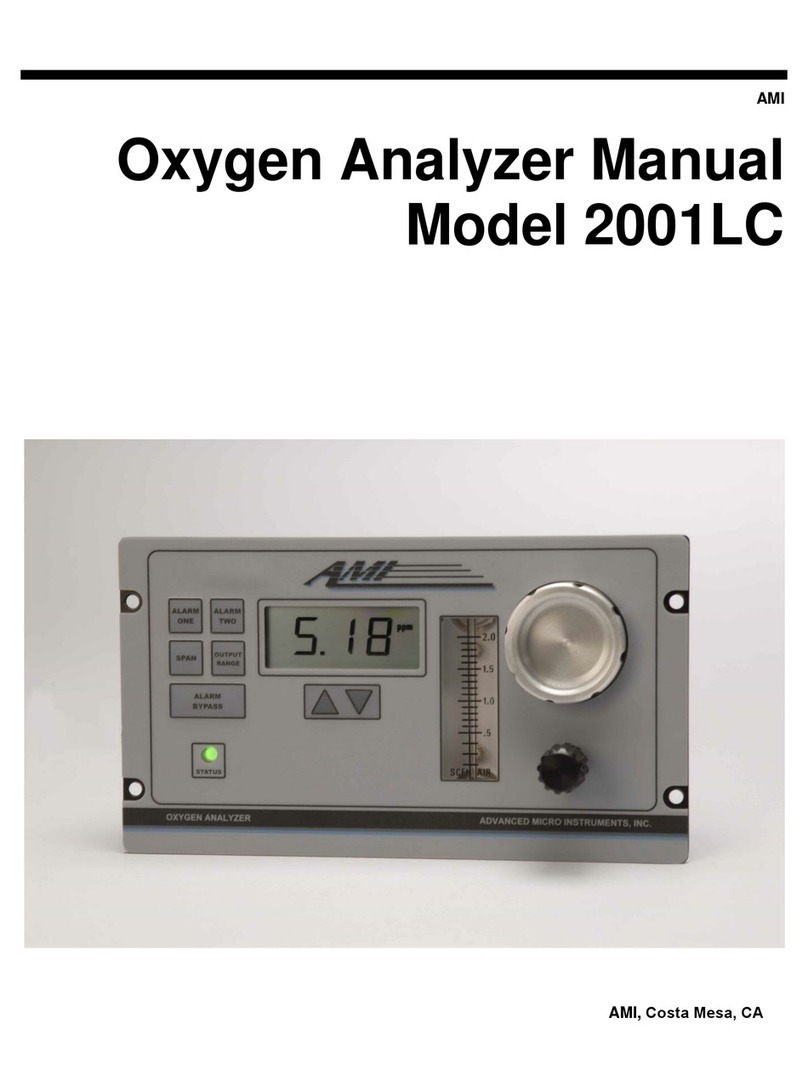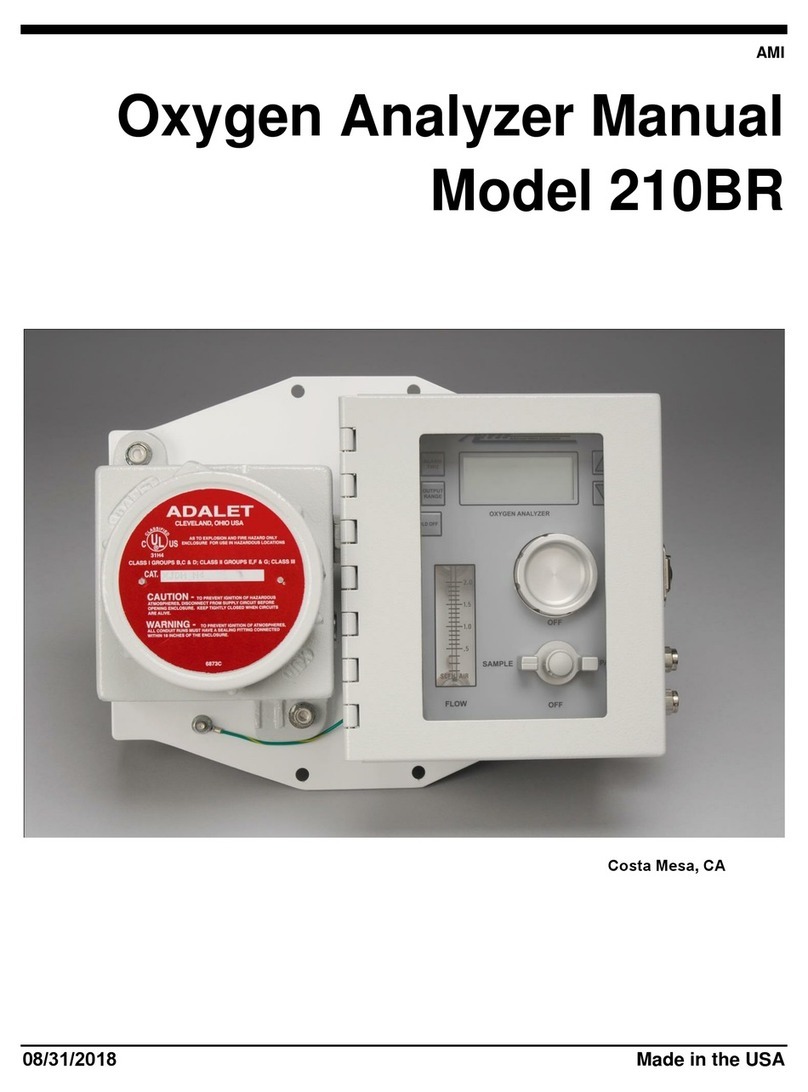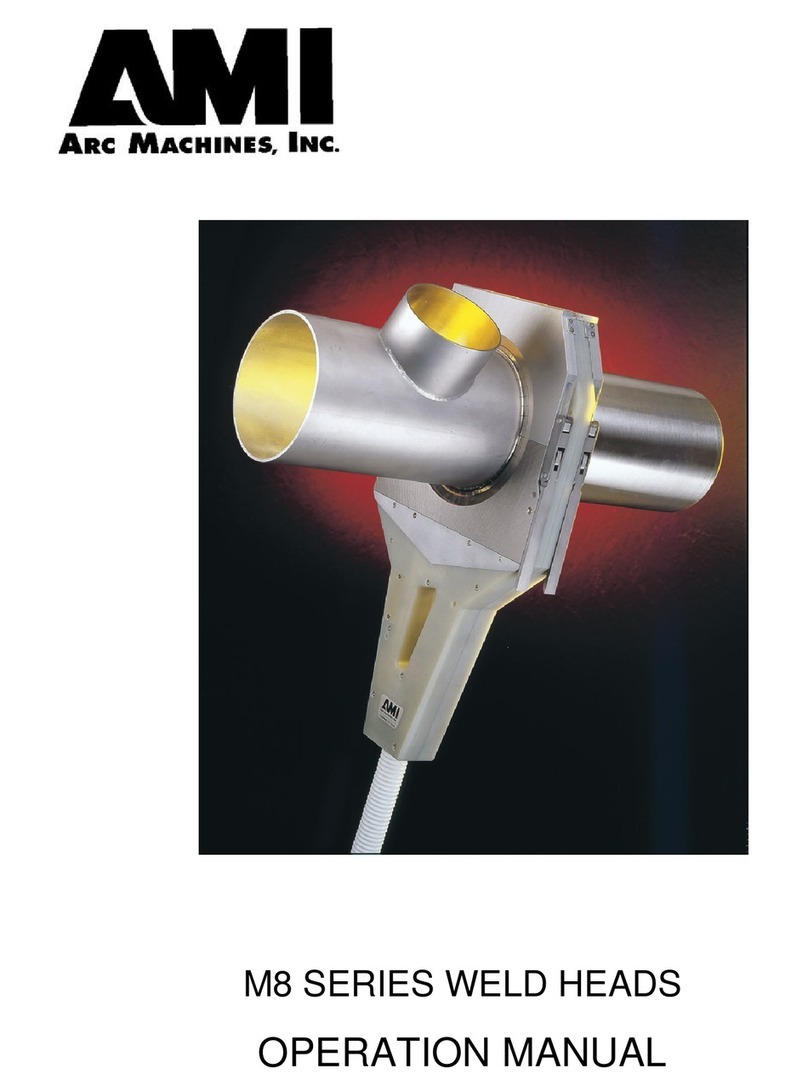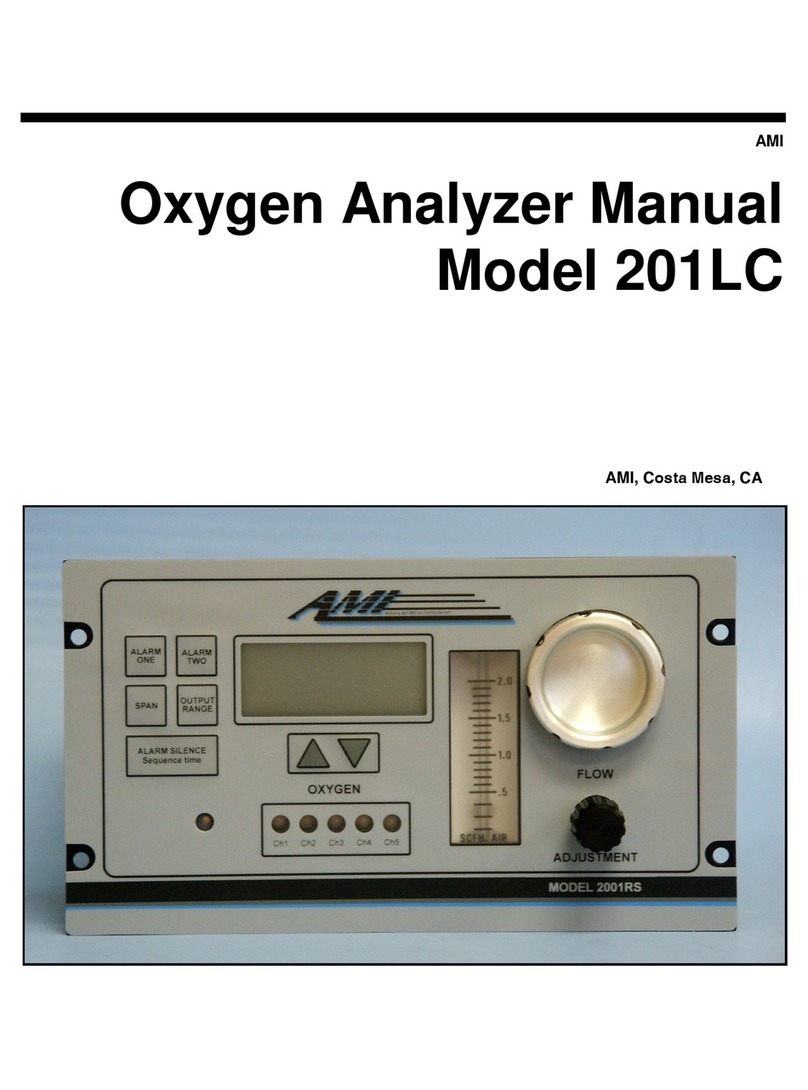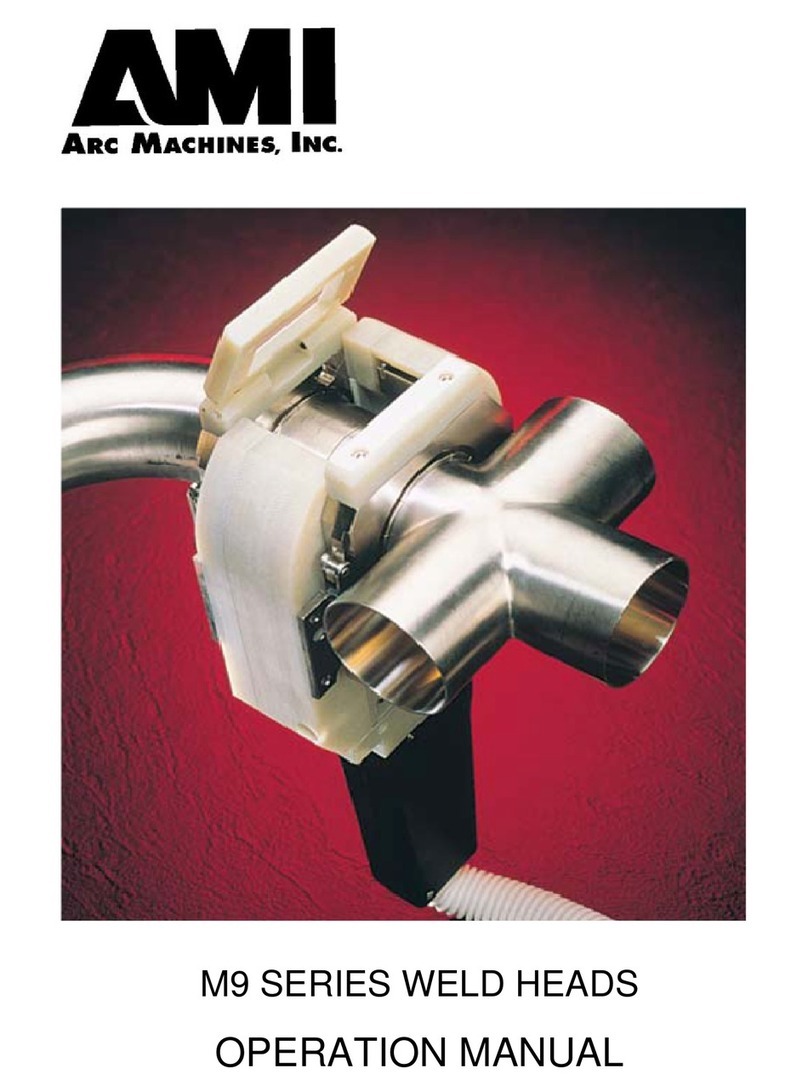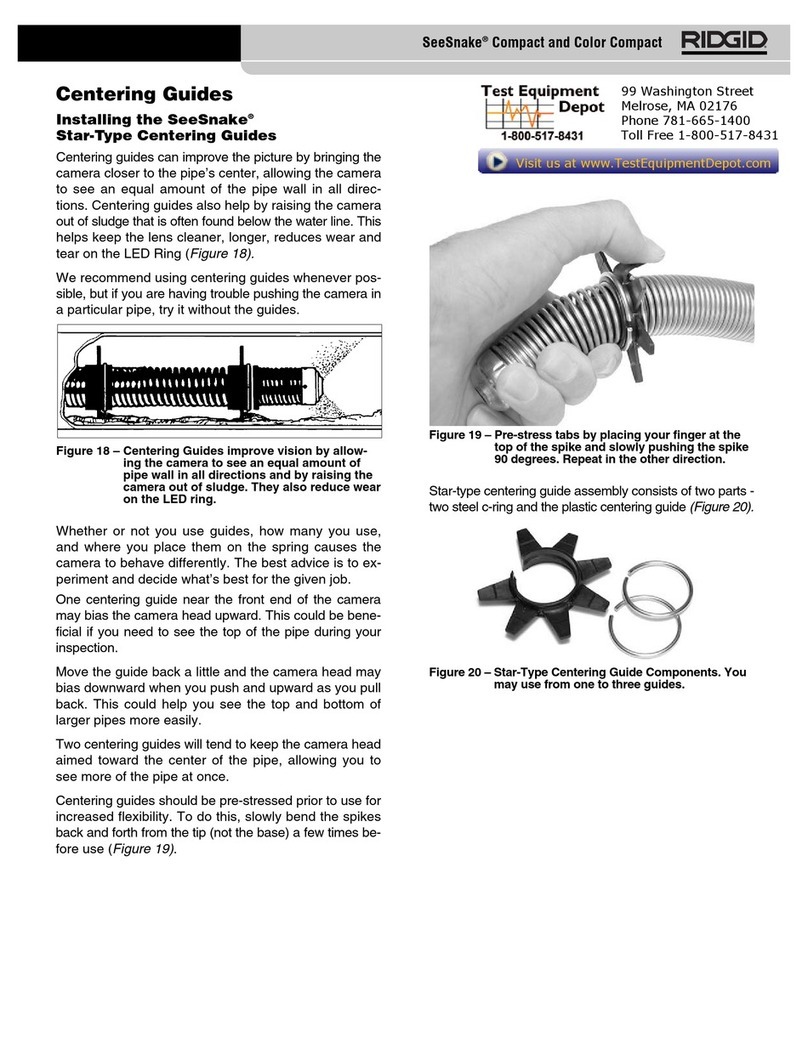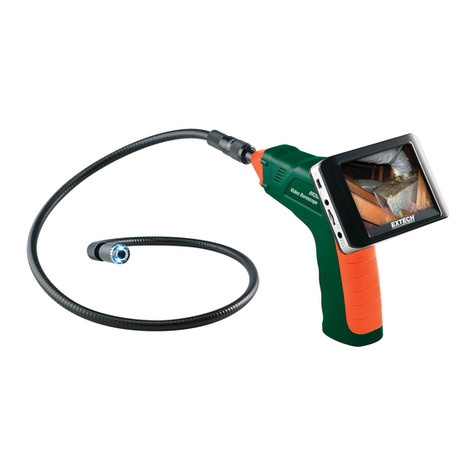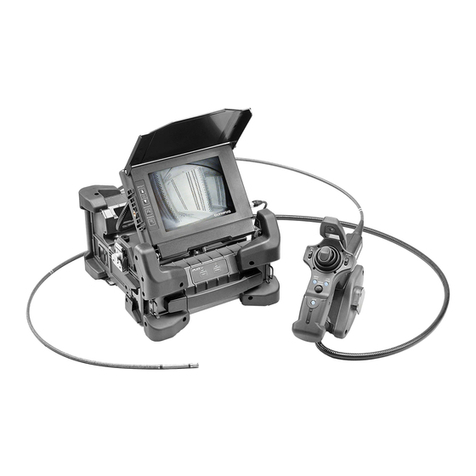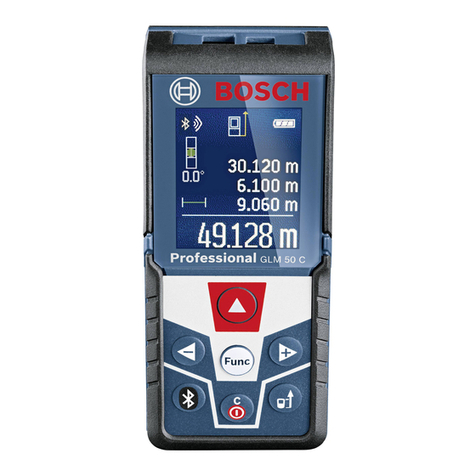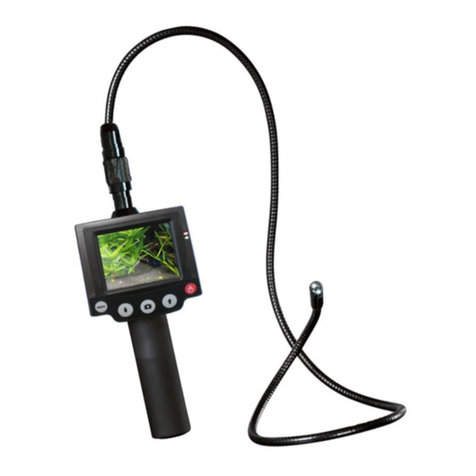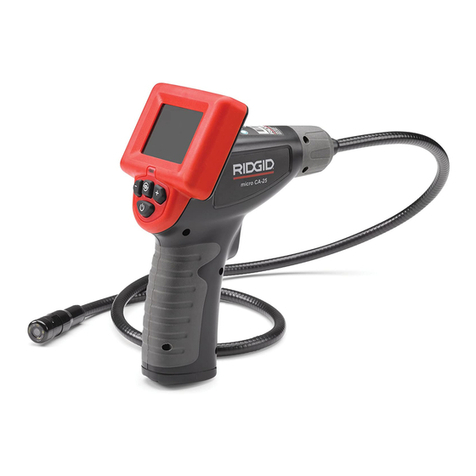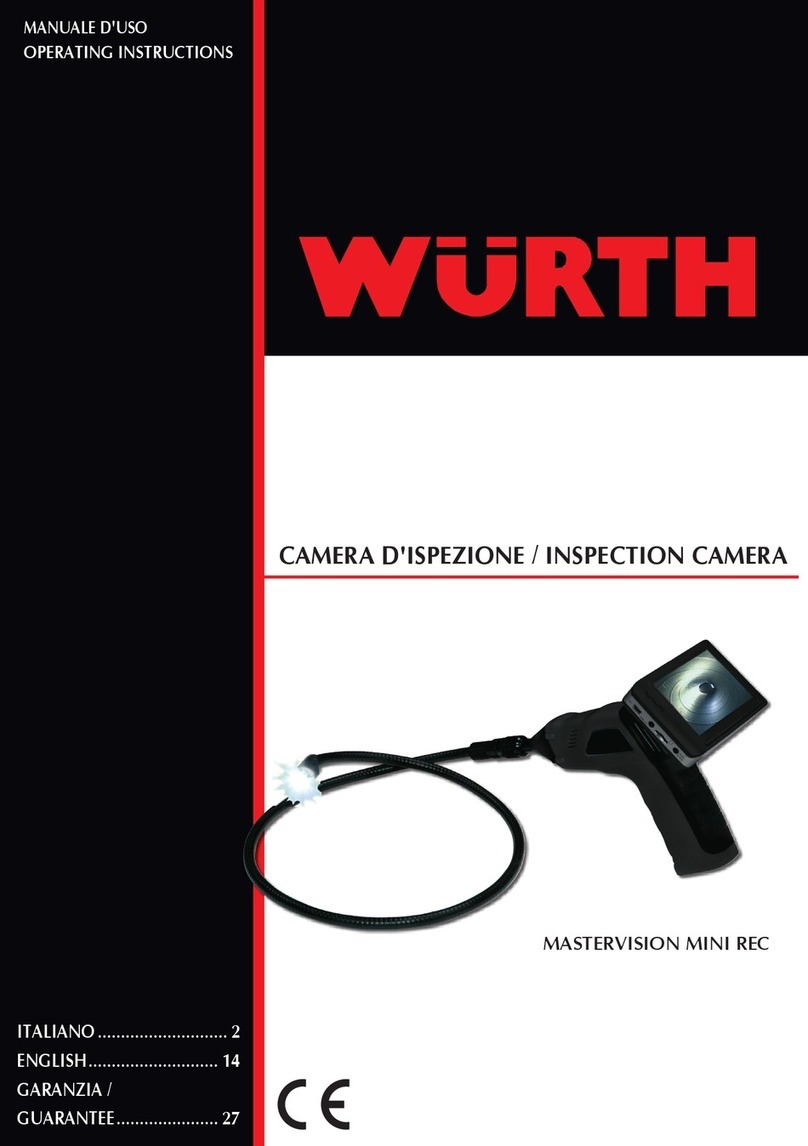
AMI Analyzer Manual Important: •
••
•4
Important:
This section contains important information to do with safety and installation. Please don’t skip it!
-------------------------Points to consider first! ------------------------------
Environment – what is the temperature range going to be where the analyzer will be installed? If the
temperature is going to go below freezing, you will need a heated ersion or to place it in a temperature
controlled building. Also, make sure it won’t get too hot in the summer – you may need to entilate or e en
air condition a building. The standard (non-heated) temperature specification is 25ºF to 115°F.
Sample conditions – if your sample is hot and wet, you will need to keep water from condensing in the
sample line or analyzer. Contact AMI for ad ice. If the sample contains high amounts of CO2, it will be
necessary to temperature control the analyzer so that the sensor doesn’t explode like a can of soda on your
car’s dashboard in summer. Contact AMI for this one too.
Sample pressure – this analyzer is designed to work with ambient pressure samples, such as that from a
glo e box. As a result it draw the sample from the source through the sample line and then onto the sensor.
The pressure drop across this line must be minimal – 1psig at the absolute most. If the line is long, use 3/8”
or wider tubing.
Power supply – The unit contains a switching power supply that is insensiti e to AC oltage or frequency
changes o er a wide range. It will work with any normal UPS system if desired.
Electrical connections - Following best electrical practices, run the analog output connections separately
from the power and alarm connections. Modbus communications if used should be run with the analog
output wiring, using twisted pair wires for both circuits. Run the alarm wires in the same conduit as the
power wires.
Solenoid valves – if the analyzer is going to be used to control gas flow (such as to shut in contaminated gas)
using solenoid al es, consider using latching type al es and the analyzer pulse feature so as to minimize
power consumption, particularly if you are using a battery and in erter as the power supply. Standard
solenoid al es require power to remain open (or closed), whereas latching al es require power only when
changing their position. This conser es a lot of power.
Span gas –It is strongly suggested that you use room air to calibrate this unit. If you are going to use span
gas to calibrate the analyzer as opposed to air, you will need to plumb a span gas tank to the span inlet on
the back of the analyzer. When you do this, the line to the tank will be full of air. When you subsequently
span the analyzer, oxygen from the air will ha e leaked into the span line potentially increasing its oxygen
content. Wait until the reading has stabilized, and then adjust the span.
